Can Solar Spotlights Really Light Up Trees and Architecture?
When you picture a backyard oak glowing under a spotlight or your home’s brick facade bathed in dramatic uplight, you might assume wired electric systems are the only way to go. Solar spotlights, though, are shaking up that mindset. Homeowners are increasingly curious: can these sun-powered fixtures deliver the same punch as their plugged-in cousins? The short answer is yes—if you pick the right ones. With advances in solar tech, today’s spotlights aren’t just for subtle accents; they can transform landscapes, highlight towering trees, or showcase architectural details with surprising power. Let’s dig into how they stack up, what makes them tick, and how to make them shine for your space.
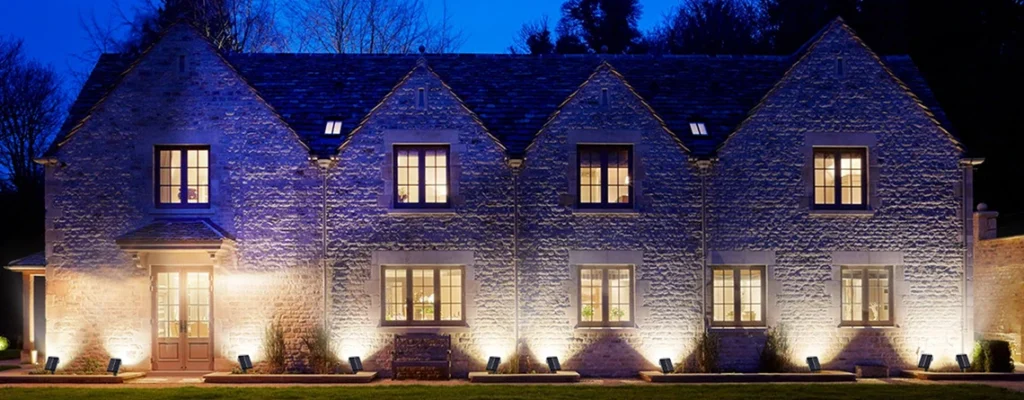
Brightness: Solar vs. Wired Spotlights
The heart of the question is whether solar spotlights are bright enough to rival wired setups. Brightness, measured in lumens, tells the story. Most solar spotlights range from 50 to 300 lumens, with high-end models pushing 500-1000 lumens. Wired spotlights often start at 500 lumens and can soar past 2000, but they come with installation costs and higher energy bills. A quality solar spotlight at 200-300 lumens can easily highlight a 20-foot tree or a two-story wall, creating that wow factor without the electrician.
Here’s a quick comparison for clarity:
- Budget Solar (50-100 lumens): Good for small shrubs or low accents, not tall trees.
- Mid-Range Solar (200-300 lumens): Ideal for medium trees or single-story facades, offering crisp, focused light.
- High-End Solar (500+ lumens): Rivals wired systems, illuminating large oaks or wide architectural features.
- Wired Standard (500-2000 lumens): Brighter but pricier, with ongoing power costs.
Real-world feedback? Users on landscaping forums praise 300-lumen solar models for casting vibrant beams on 15-foot pines, often noting they’re “as good as my old wired setup” for half the hassle. The trick is prioritizing lumens over wattage hype—solar efficiency has closed the gap.
Beam Angle: Shaping the Spotlight Effect
Brightness alone doesn’t cut it; beam angle determines how solar spotlights highlight your targets. A narrow 15-30° beam is laser-focused, perfect for pinpointing a tree trunk or a statue’s details. Wider 60-120° beams spread light across broad surfaces, like a home’s facade or a sprawling hedge. Picking the wrong angle can leave your oak half-lit or your wall washed out.
Consider these scenarios:
- Tall Trees (20-30 feet): A 30° beam with 300+ lumens ensures the canopy pops without wasting light on the ground.
- Architectural Walls: A 60-90° beam at 200-500 lumens evenly coats wide surfaces, highlighting textures like stone or brick.
- Mixed Features: Adjustable-angle spotlights (common in premium models) let you tweak from narrow to wide, adapting to trees or structures.
One homeowner shared how swapping 120° budget lights for 30° 400-lumen models transformed their cedar tree from a dim blob to a glowing centerpiece. Pro tip: look for spotlights with pivotable heads to fine-tune angles post-installation.
Battery and Panel Power: Keeping the Lights On
Solar spotlights live or die by their ability to store and convert sunlight. Battery capacity (measured in mAh) and solar panel size dictate runtime, especially for long winter nights or cloudy days. A typical 200-lumen spotlight needs a 1500-2000mAh battery to glow 8-12 hours, while 500+ lumen models often demand 3000mAh or more. Panel size matters too—larger monocrystalline panels (2-4W) charge faster and perform better in low light than smaller polycrystalline ones.
Key factors to check:
- Battery Size: Aim for 1800mAh+ for reliable all-night performance, especially in northern climates with shorter days.
- Panel Efficiency: Monocrystalline panels convert up to 26% of sunlight, outpacing polycrystalline (15-20%) for consistent charging.
- Charge Time: Quality units fully charge in 4-6 hours of direct sun, with some storing enough for 2-3 cloudy days.
A 2025 review highlighted models with 2200mAh batteries and 3W panels, which kept 300-lumen beams steady through a stormy week. Weak batteries or tiny panels? You’ll get a flicker-fest by midnight, undermining any safety or aesthetic goals.
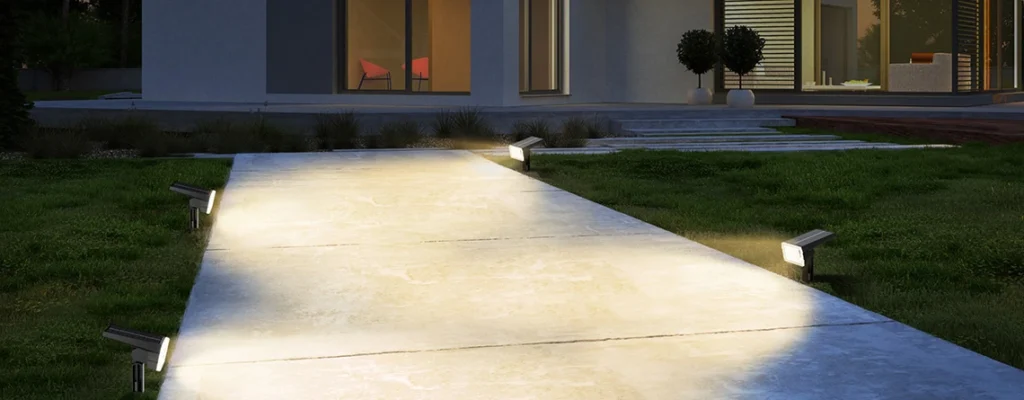
Placement and Adjustment: Getting It Right
Even the brightest solar spotlight flops if poorly placed. Strategic positioning and adjustability are key to maximizing impact. Place lights 3-6 feet from the base of a tree or wall for optimal spread—too close, and you get a harsh hotspot; too far, and the beam weakens. Ground stakes work for most setups, but wall-mounted options add flexibility for architecture. Adjustable heads (tilting 90-180°) let you dial in the perfect angle, whether you’re uplighting a gable or a 25-foot maple.
Best practices for placement:
- Distance Matters: 3-5 feet from trees, 4-6 feet from walls for balanced light distribution.
- Angle for Drama: Tilt upward at 45° for trees to emphasize height; 30-60° for walls to highlight texture.
- Avoid Obstructions: Keep panels clear of shade from bushes or eaves to maximize solar charging.
- Test at Night: Adjust after dusk to see the real effect—daytime guesses often miss the mark.
Users on home improvement sites swear by experimenting with angles over a few nights to nail the look. One landscaper noted how shifting a 200-lumen spotlight 2 feet closer to a pine doubled its visual impact. Weatherproofing (IP65 or higher) is non-negotiable to withstand rain or frost, ensuring your setup lasts.
Pairing for Maximum Impact
Sometimes, spotlights need backup to fully transform a space. Combining them with other solar lighting creates a layered, professional look:
- Pathway Lights: Pair with 30-50 lumen path lights to guide steps while spotlights highlight features.
- Floodlights: Add a 500+ lumen solar flood for large areas, like a barn’s facade, where spotlights fall short.
- Motion Sensors: Integrate motion-activated spotlights for security, saving battery while still showcasing key elements.
A suburban homeowner described using 300-lumen spotlights on trees with 50-lumen path lights for a “resort-like” yard that wowed guests. The combo ensures safety and aesthetics work hand-in-hand.
The Verdict: Solar Spotlights Shine Bright
Solar spotlights have come a long way, and high-quality models absolutely deliver for highlighting trees or architecture. With 200-500 lumens and the right beam angle (30° for trees, 60-90° for walls), they rival wired systems without the hassle of cords or electricians. Battery life and panel efficiency are critical—look for 1800mAh+ and monocrystalline panels to ensure all-night glow. Placement is everything: a few feet’s difference or a tweaked angle can make your oak or facade pop like a pro design.
These lights aren’t just about looks—they’re eco-friendly, slashing energy costs while adding curb appeal and safety. Forums buzz with stories of transformed yards, from glowing pines to stone walls that steal the show. Pick models with solid lumens, adjustable angles, and robust batteries, and you’ll have a landscape that shines night after night. Solar spotlights aren’t just a substitute for wired—they’re a smart, sustainable choice for elevating your outdoor space.

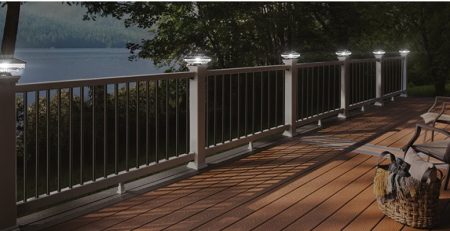
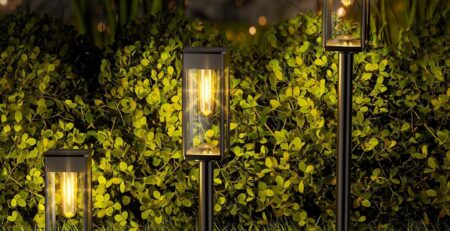
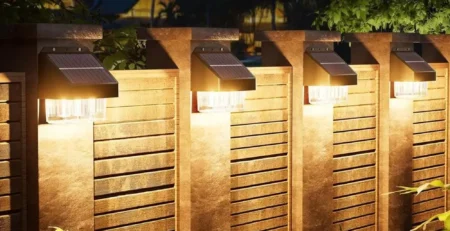
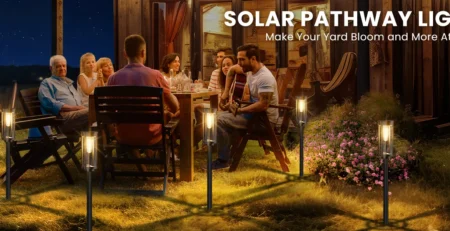
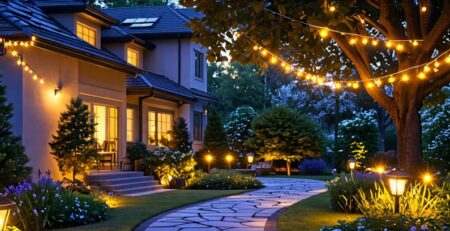
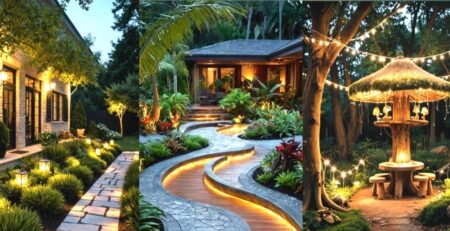
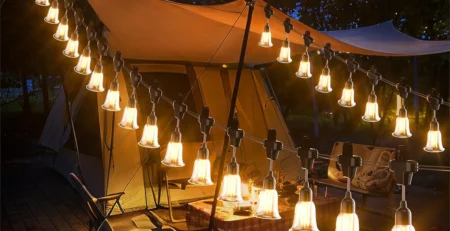

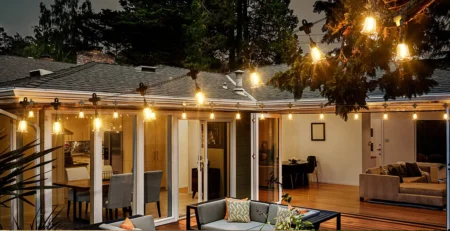
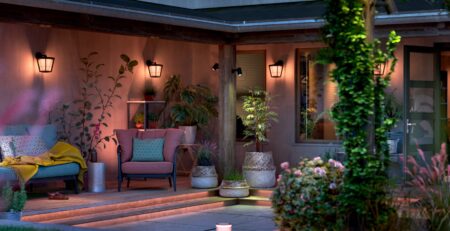
Leave a Reply